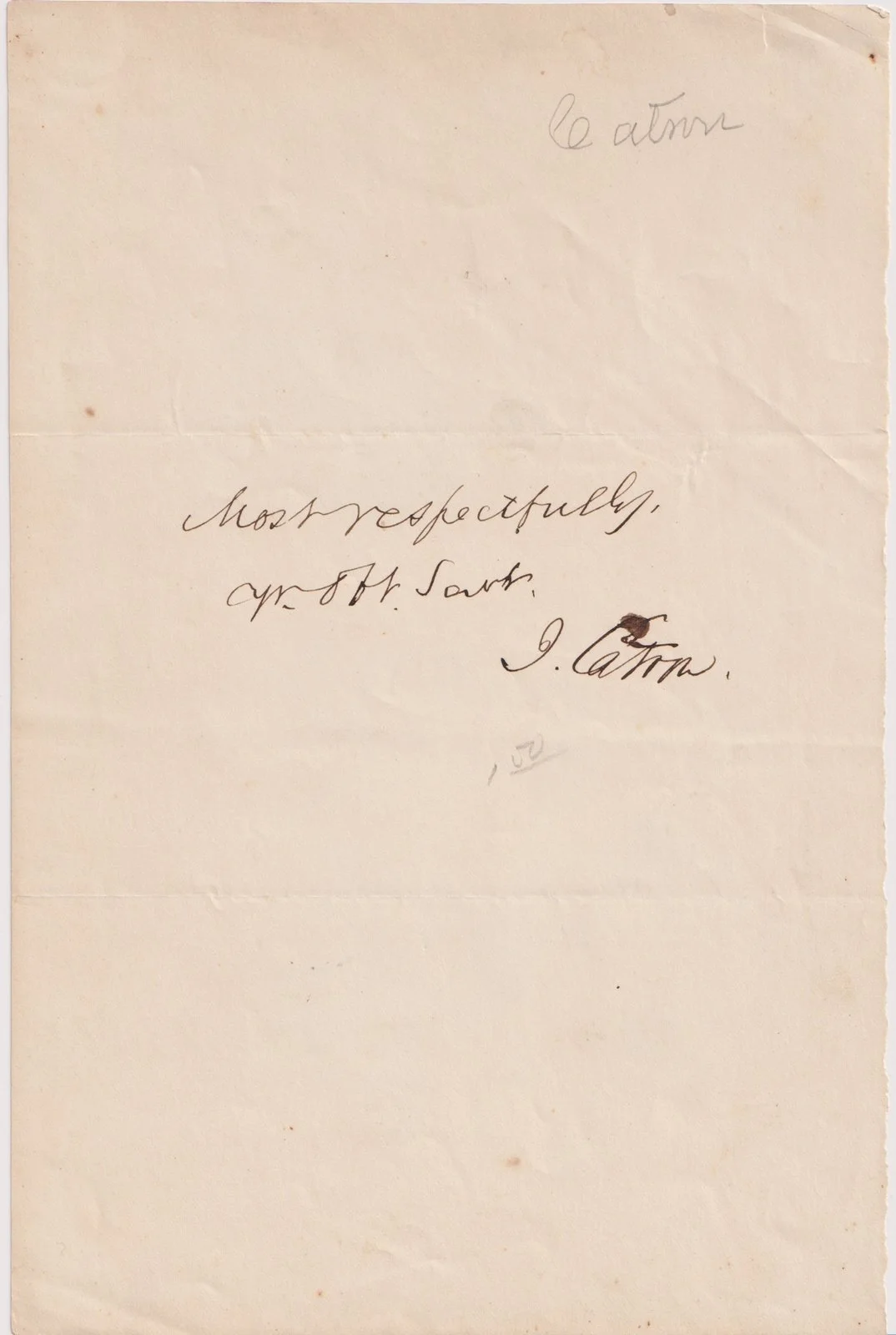
Catron, John
John Catron – signed album page. The nicely centered signature from the Associate Justice reads: “Most respectfully/ yr. obt. Servt. J. Catron”.
Condition. The album page measures 7.5” x 5.5” with a pencil notation along the upper blank edge and a long-passed price of “1.50” marked in pencil below the signature. There is an ink blot on the upper stroke on the “C” of his signature. The right edge is uneven, having been removed from the album. Two faint, flattened fold lines, above and below the writing, suggest this was solicited by a collector through the mail.
Catron’s autograph should be considered as scarce to near rare, often requiring patience or an active search to find. When found, they are typically clips, cards or album pages such as this. His long tenure on the Court produced few letters and almost no official signed documents. Most available examples are what was requested from the early autograph collectors on cards, album pages or a rare photograph.
On March 3, 1837, President Jackson – on his last full day as President – signed legislation expanded the Court from seven to nine Justices. Before the ink was blotted dry, he also sent two nominations to the Senate: William Smith, who was confirmed but declined the appointment, and John Catron who took his seat in May. Catron served until May 1865, just at the end of the Civil War. In 1866 Congress reduced the Court’s size from ten to seven and Catron’s seat was never filled- making him the only Supreme Court Justice who did not succeeded and was not succeeded by another.
John Catron – signed album page. The nicely centered signature from the Associate Justice reads: “Most respectfully/ yr. obt. Servt. J. Catron”.
Condition. The album page measures 7.5” x 5.5” with a pencil notation along the upper blank edge and a long-passed price of “1.50” marked in pencil below the signature. There is an ink blot on the upper stroke on the “C” of his signature. The right edge is uneven, having been removed from the album. Two faint, flattened fold lines, above and below the writing, suggest this was solicited by a collector through the mail.
Catron’s autograph should be considered as scarce to near rare, often requiring patience or an active search to find. When found, they are typically clips, cards or album pages such as this. His long tenure on the Court produced few letters and almost no official signed documents. Most available examples are what was requested from the early autograph collectors on cards, album pages or a rare photograph.
On March 3, 1837, President Jackson – on his last full day as President – signed legislation expanded the Court from seven to nine Justices. Before the ink was blotted dry, he also sent two nominations to the Senate: William Smith, who was confirmed but declined the appointment, and John Catron who took his seat in May. Catron served until May 1865, just at the end of the Civil War. In 1866 Congress reduced the Court’s size from ten to seven and Catron’s seat was never filled- making him the only Supreme Court Justice who did not succeeded and was not succeeded by another.
